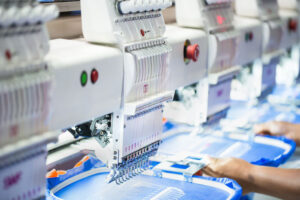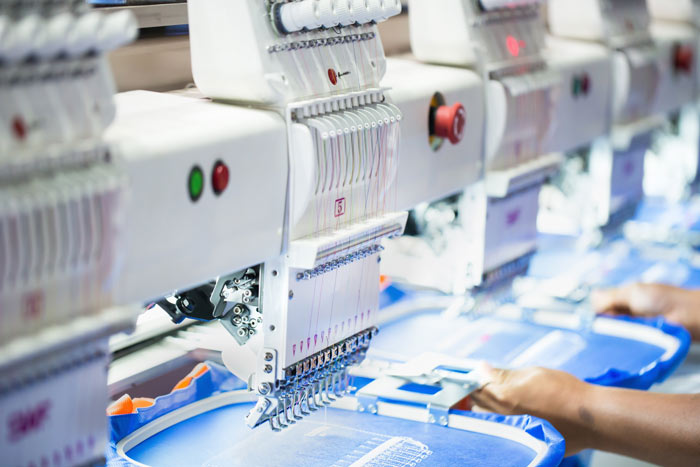Ever since they first came out, embroidery machines have provided us with a wide range of applications. Advertising, designing, or making decorations, you name it!
 However, getting an embroidery machine is not as simple as it seems. There are numerous types out there, and you’ll need to know about all of them if you want to land a good purchase.
However, getting an embroidery machine is not as simple as it seems. There are numerous types out there, and you’ll need to know about all of them if you want to land a good purchase.
For that purpose, I’ve listed out and described all the different types of embroidery machines below.
If you’re on the lookout for embroidery machines and can’t decide what type to get, give this article a read. I guarantee that your life will be made a whole lot easier!
To make it easily understandable, I have divided the options into two main types. Specific types and generic types.
Generic Types
These types will explain the two main categories in which the embroidery machines are divided.
After you’ve chosen this type, you can start looking for the specific types that I’ve mentioned below.
1. Free-Hand Embroidery Machine
These machines provide the user with freedom of choice. You can make intricate designs on delicate fabric with this machine if you trust the skills in your hand.
I’m sure you will love how freehand embroidery machines combine the efficiency of a machine with the uniqueness of your hand’s design.
These are mostly single needle machines and will provide only one color output.
If you’re a beginner who wants to get a better grasp of threading and stitching, then freehand embroidery machines are the ideal choice for you!
2. Computerized Embroidery Machine
Most advanced users and major design manufacturers use computerized embroidery machines. They take an already programmed design as input and print it out on a tightly stretched fabric underneath the needle.
These machines work by moving only the fabric and the needle, while the embroidery arm remains stationary.
This is why computerized machines produce more designs in a shorter period of time.
If you plan on mass producing your designs on multiple fabrics, you should go for these machines. They will save you tons of time and labor!
Specific types
These are the types that you can look for on the product specification list of your embroidery machine.
After you’ve narrowed down the generic type, you can choose to be more specific with the needles according to your needs.
1. Single Needle Embroidery Machines
As the name states, a single needle embroidery machine operates by using just one needle. Many people don’t like the fact that these types of machines provide limited stitching options.
However, that’s not a big issue for beginners.
Fewer stitching options for these machines don’t mean fewer possibilities for design. It’s just that you won’t have different color options for multiple threads.
Rest assured, if you have a design in mind, a single needle embroidery machine will print that design just like a multi-needle embroidery machine would. But with fewer colors and at a slower speed.
Also, you can only insert your thread hoop at one point in this machine.
With that said, I should let you know that the stitching speeds for these machines usually range from 300 to 1000 stitches per minute.
This is not at all low, and it’s perfect for someone who is just starting out in this line of work!
2. Multi-Needle Embroidery Machines
As embroidery work starts to get complicated, you can see more and more people moving from a single needle to multi-needle embroidery machines.
These machines can switch between different colors at a time. The best part about this feature is that it introduces massive versatility in your projects.
This means that all you have to do is be creative with your designs. The rest is up to the machine. There are about 4 to 10 needles in these machines, and each needle can sustain its own color.
That means 4 to 10 color options on just one design. Isn’t that great?
However, you’ll need to have some decent work experience and technical knowledge for the operation of the software. Only then can you maximize the utility of these machines!
The stitching speeds of these machines range from 400 to 1000 stitches. This isn’t a huge difference compared to single-needle machines, but you’ll need a lot of experience to operate these machines effectively!
Conclusion
The right choice of an embroidery machine boils down to your needs. It’s completely normal to be nervous before making the final call. After all, an embroidery machine will take a toll on you financially, regardless of which type to use.
I hope that breaking down these machines into different types comes in handy for you. I’ve explained the general features without diving deep into technical stuff so all types of readers can understand.
If you want to know more or if you think that there’s something that I might have missed, feel free to ask any questions in the comment section below!
Read Also:

